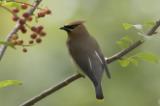 © Pete Saloutos/Panoramic Images (Washington Title Image Large)
© Pete Saloutos/Panoramic Images (Washington Title Image Large)

Ecosystems 101
What are ecosystems? Forests, grasslands, wetlands, and subalpine meadows all reflect the concept of ecosystems; they are assemblages of species occurring within particular physical environments. But it’s important to note that the term ‘ecosystem’ does not have a fixed scale in its general usage. It has been used to characterize areas that vary in size from a small puddle of water to large landscapes.
How are ecosystems defined? Ecologists have developed various classification systems to characterize and describe the diversity of ecosystem types. A classification system allows us to both better understand how species interact with each other and the physical environment and to prioritize ecosystems for conservation action.
Ecosystem classification systems differ depending on purpose and scale. In Washington, the approach to classification has been different in terrestrial, freshwater, and marine environments.
Terrestrial Ecosystems - Classification of Washington’s terrestrial ecosystems has been based upon vegetation and/or utility as wildlife habitat. There are three major classifications used in Washington:
- Wildlife-Habitat Relationships in Oregon and Washington - Managing Directors: David Johnson and Thomas O’Neil. This classification synthesizes information on Washington and Oregon's amphibians, birds, mammals and reptiles and their terrestrial, freshwater, and marine habitats. It identifies 32 wildlife habitats. Read more >>
- U.S. National Vegetation Classification (USNVC) - The USNVC is an ecological classification developed by NatureServe and its natural heritage member programs in partnership with the Federal Geographic Data Committee Vegetation Subcommittee (FGDC), the Ecological Society of America Vegetation Classification Panel (see Jennings et al. 2003)) and federal partners. The USNVC is a hierarchical system with physiognomic classes in the higher (coarser) levels and species-composition-based alliances and plant associations at the lowest (finest) levels. Learn more about the USNVC through NatureServe Explorer.
- Ecological Systems – Ecological systems are classification units developed by NatureServe. An ecological system is defined as “a group of (existing) plant community types that tend to co-occur within landscapes sharing similar ecological processes, substrates, and/or environmental gradients.” The purpose of this classification system is to provide an intermediate scale for mapping efforts, assessments, and for establishing conservation priorities. Read more about the Ecological Systems at NatureServe Explorer.
Marine and Estuarine Classification – A classification of Washington’s marine and estuarine ecosystems developed by Dr. Megan Dethier for the Natural Heritage Program uses physical and biotic parameter data, resulting in the identification of 60 intertidal and subtidal ecosystem types (Dethier, M.N. 1990. A Marine and Estuarine Habitat Classification System for Washington State. Natural Heritage Program, Department of Natural Resources. 60 pp.).
Estuarine and marine shorelines in Washington have also been mapped according to the ShoreZone Mapping System by the DNR Nearshore Habitat Program. View the document in PDF format >>
Freshwater Aquatic Classification - The Nature Conservancy of Washington developed a freshwater ecosystems classification for the state. This classification relies primarily on physical parameter data (e.g., stream gradient, elevation). Read more >>


